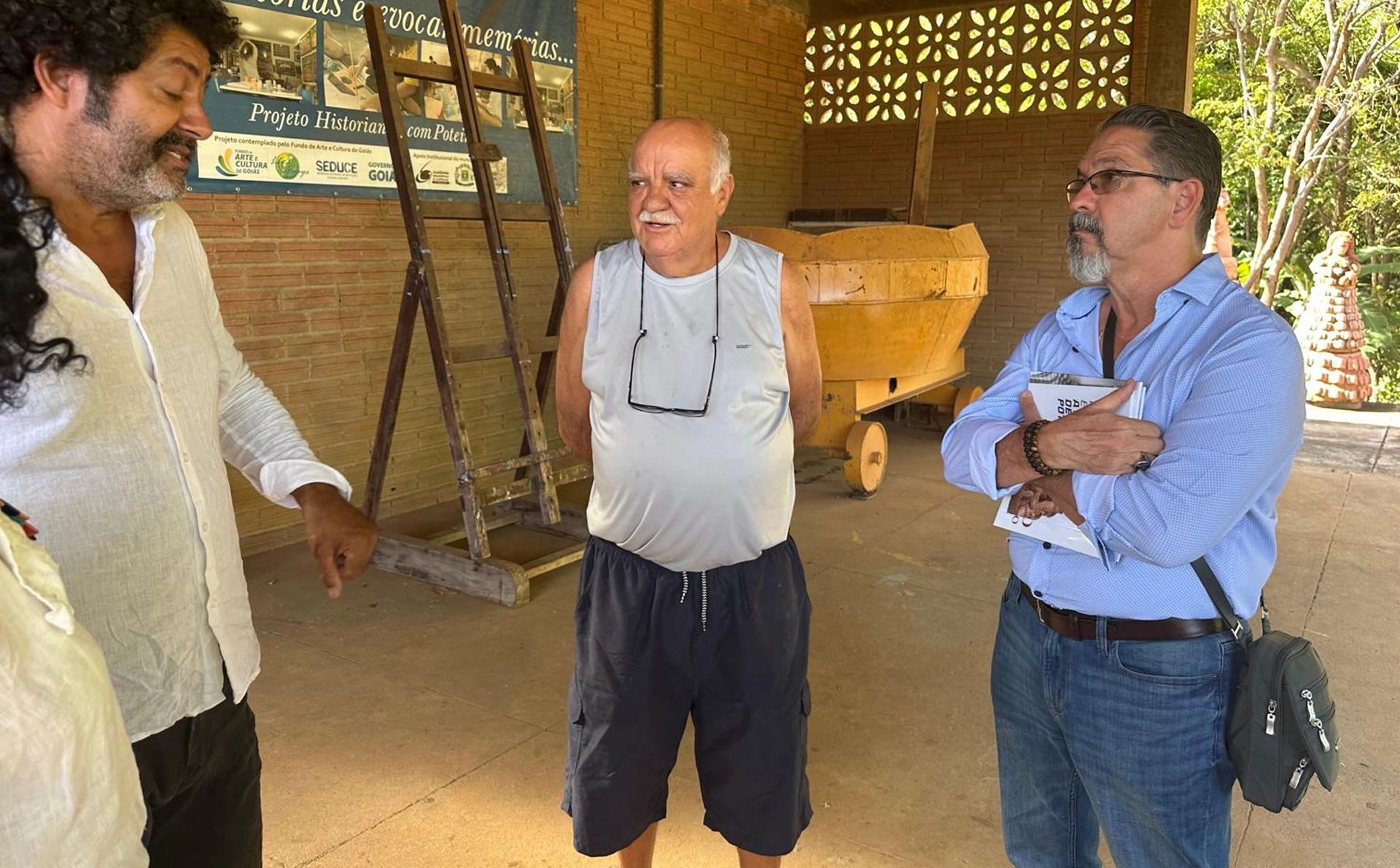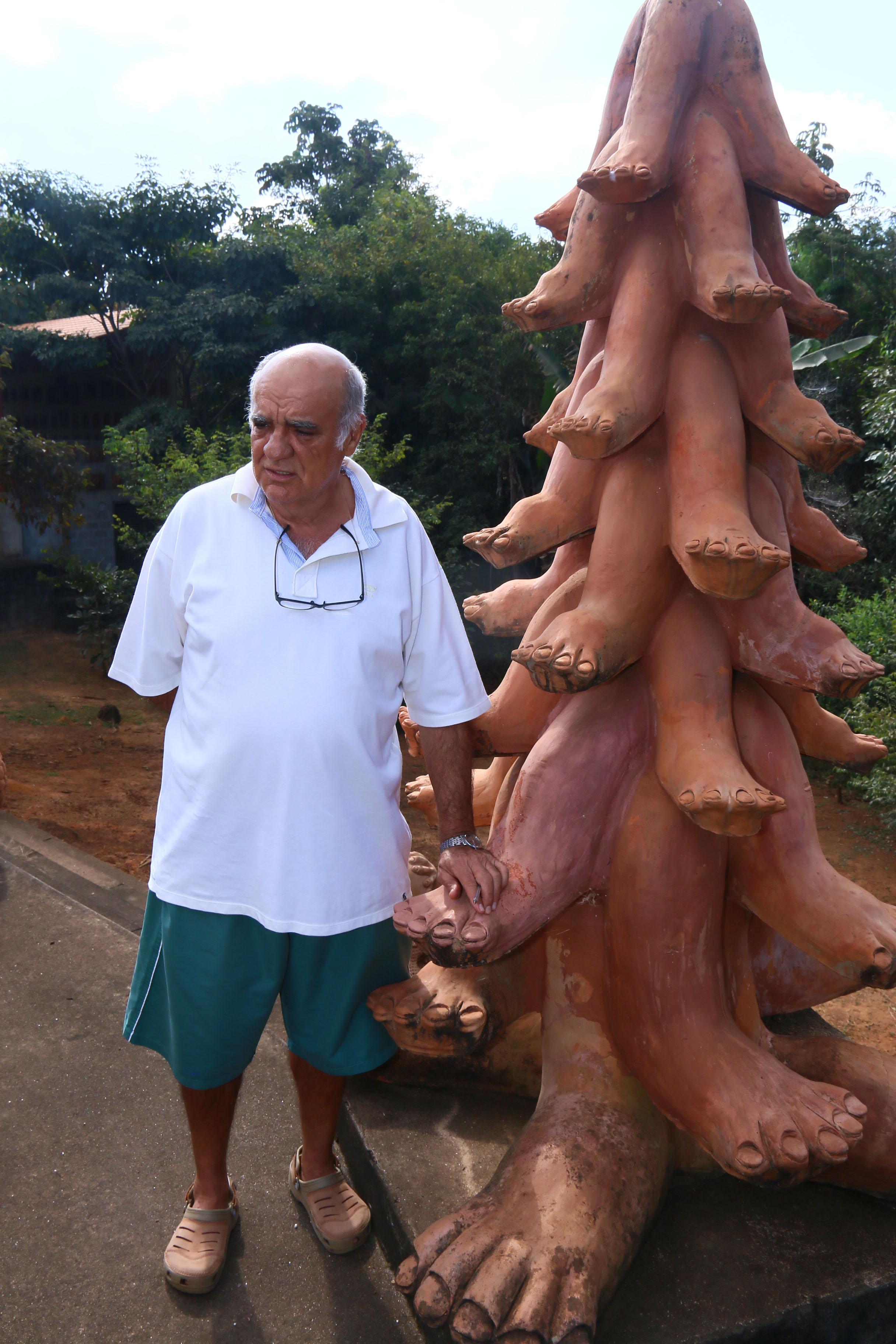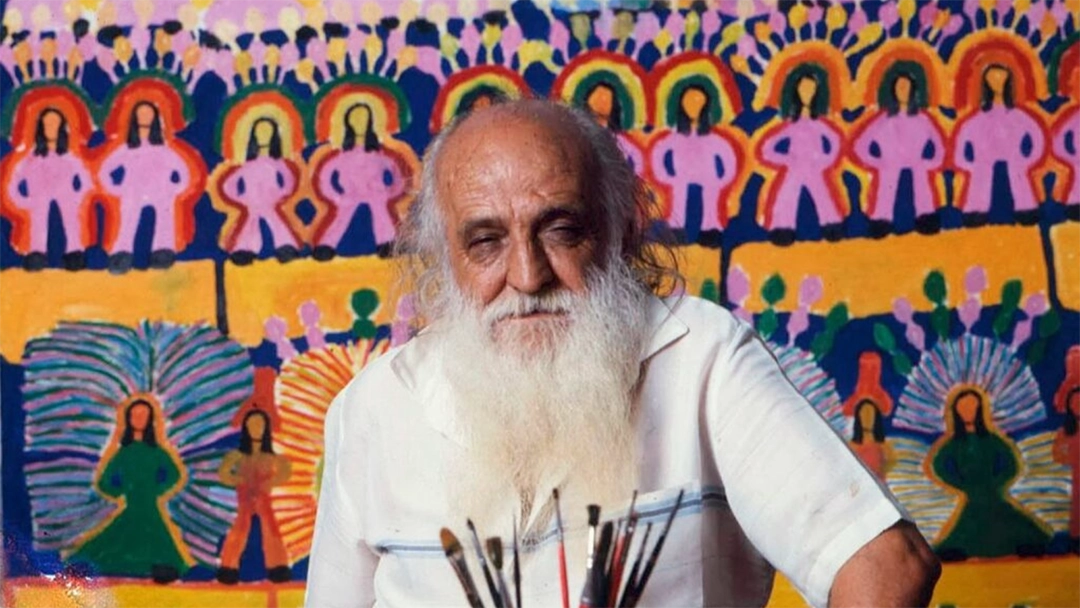


Members of the Board of the Museum of Contemporary Art of the Americas, together with directors of the Fine Arts Ceramic Center, visited today the Instituto Antônio Poteiro. They were received by painter, draftsman, and ceramist Américo Poteiro, son of the renowned Luso-Brazilian artist Antônio Poteiro. The delegation not only had the opportunity to admire dozens of magnificent ceramic sculptures but also agreed upon forthcoming exchanges and collaborations between the two institutions.
Present at the visit were Leonardo Rodríguez, Founder and Executive Director of MoCA-Americas; Milena Martínez Pedrosa, Deputy Director of the FACC; and Ariel Pedrosa, Board member of the museum and one of its principal patrons. From the Brazilian side, participants included Maria de Lourdes da Cunha Souza—known as Malú da Cunha—cultural promoter and curator in Goiás, as well as the artist Gerson Fogaça, a native of Goiás with broad international projection.

Founded in 2011, the Instituto Antônio Poteiro preserves and disseminates the oeuvre and memory of Luso-Brazilian artist Antônio Poteiro (1925–2010), celebrated for translating the religiosity and popular culture of Goiás into a singular visual language spanning ceramics, painting, and sculpture. Through its collection, the Institute connects local communities with artistic traditions and fosters new generations of artists by means of educational projects and exhibitions that weave together daily life and the creative imagination of the Cerrado.
Its mission unfolds along three principal axes: conservation of the legacy (cataloguing, certification, and digital archives); educational outreach (such as the workshop Brincando com Poteiro, which introduces children to art); and exhibition programs (highlighting the work of Poteiro as well as his artistic lineage, encompassing father and son). In 2022, for instance, the exhibition As Matérias Vivas de Antônio Poteiro: Barro, Cor e Poesia presented 53 works—39 paintings and 8 sculptures by the artist, along with works by both his father and his son—at the Centro Cultural Octo Marques in Goiânia.

The legacy of Antônio Poteiro remains vibrant through a series of traveling exhibitions disseminating his work across Brazil. In 2025, CAIXA Cultural Fortaleza hosts Antônio Poteiro – A Luz Inaudita do Cerrado (August 13–November 2), with over fifty works and broad institutional sponsorship (A Notícia do Ceará). The same exhibition had previously been presented at CAIXA Cultural São Paulo (May 14–July 27, 2025) as a centennial retrospective, offering a journey through the symbolic universe and profound spiritual resonance of the Cerrado (PluralNews).

Américo Poteiro (b. 1959, Goiânia) grew up immersed in the family atelier, where clay, pigments, and popular themes permeated daily life. While he inherited from his father an affinity for color and material, Américo developed a language of his own, oscillating between lyrical figuration and symbolic abstraction, always in dialogue with the nature of the Cerrado and the spiritual imagery that marked his father’s oeuvre.
Unlike his father, whose vision was rooted in the ingenuous and the devotional, Américo approaches the poetic and the dreamlike, probing affective memory and the passage between heritage and contemporaneity. His works—be they paintings, reliefs, or ceramics—sustain a dialogue across generations, where artisanal form becomes a vehicle for aesthetic reflection.
Regarded as one of the most steadfast continuators of the Poteiro legacy, his work has been exhibited in institutions in Goiás and São Paulo, and features prominently in curatorial projects of the Instituto Antônio Poteiro, which presents him as a vital link between tradition and renewal in the art of Goiás.

Antônio Poteiro (1925–2010) was a Luso-Brazilian artist born in Braga, Portugal, who became naturalized Brazilian after emigrating with his family to Goiás in 1957. The son of folk sculptor Américo Batista de Souza, he inherited a profound relationship with clay and the sensibility to transform everyday life into a plastic language of his own. Beginning his career as a ceramist, he expanded into painting in the 1960s, cultivating an aesthetic poised between the naïve and the mystical—rooted in popular religiosity, rural mythology, and the traditions of Brazil’s interior.
His oeuvre, vibrant in color and vitality, reinterprets biblical themes and peasant scenes with a spontaneity that aligns him with so-called “primitive” or naïf art, though his vision transcends folklore: in his canvases, the baroque and the innocent converge in a powerful symbolic intuition. Poteiro became a foundational figure in consolidating the artistic identity of Goiás, situating the production of the Cerrado within Brazil’s broader cultural map.
Recognized with numerous awards and exhibitions in Brazil and abroad, his works are held in collections such as the Museu Nacional de Belas Artes, the Museu de Arte de São Paulo (MASP), and the Museu de Arte Contemporânea de Goiás. More than an artist, Poteiro was a bridge between generations: an artisan of everyday spirituality who bequeathed a profoundly Brazilian imaginary, where faith, manual labor, and nature converse in enduring harmony.

